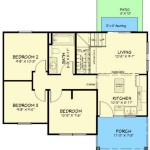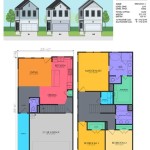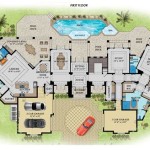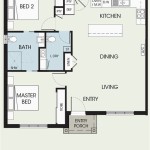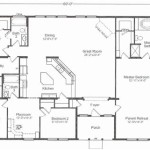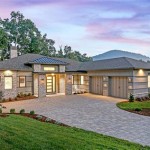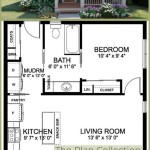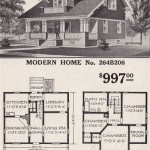Small Home Plans: Cost To Build
The allure of a small home plan is undeniable. They offer a blend of affordability and practicality, catering to those seeking a manageable living space without sacrificing style or functionality. However, understanding the cost to build a small home is crucial before embarking on this exciting journey. While the square footage might be smaller, the building process still involves numerous factors that can significantly impact the final price tag.
Factors Influencing Small Home Construction Costs
Determining the accurate cost of building a small home requires a comprehensive assessment of various factors. These factors can be categorized into two main groups: site-related and construction-related.
Site-Related Factors:
The location of your future home plays a vital role in shaping the construction costs. Here are some key considerations:
- Land Costs: Land prices vary greatly depending on the location, proximity to amenities, and local real estate market. Rural areas typically offer more affordable land options compared to urban or suburban locations.
- Site Preparation: The level of site preparation required can significantly impact costs. This includes clearing the land, grading, and installing utilities, which can range from minimal to extensive depending on the site’s condition.
- Accessibility: The accessibility of the site for construction vehicles and materials is another crucial factor. Difficult terrain or limited access routes can increase transportation costs and impact the overall budget.
- Permits and Regulations: Each locality imposes specific building codes and permits, which vary in complexity and cost. It is essential to research and factor in these expenses during the planning phase.
Construction-Related Factors:
Beyond the site, various construction-related factors influence the cost of building a small home. These factors include:
- Building Materials: The choice of building materials directly impacts the final price. High-quality materials like sustainable hardwoods or energy-efficient windows and insulation can be more expensive but offer long-term value.
- Construction Design: The complexity of the architectural design, including the number of floors, roof pitch, and unique features, can influence building costs. Simpler designs tend to be more affordable, while intricate designs require specialized labor and materials.
- Labor Costs: Labor costs vary significantly depending on the region and skilled trades required. Hiring specialized contractors for plumbing, electrical, or HVAC work can increase the overall budget.
- Finishes and Appliances: The level of finishes and appliances installed plays a role in the cost. High-end finishes like custom cabinetry, granite countertops, and top-brand appliances come with a premium price.
- Contingency Costs: It’s always wise to allocate a budget for unforeseen circumstances or changes during construction. This contingency fund acts as a buffer to handle unexpected expenses and ensures a smooth project flow.
Cost Estimates for Small Home Plans
Providing an exact cost estimate for building a small home is impossible without detailed plans and specific location factors. However, rough estimates can provide a general idea of potential costs.
According to industry data, the average cost to build a small home in the United States ranges from $100 to $250 per square foot. This range encompasses basic construction costs, excluding land, site preparation, and optional extras.
For a 1,000 square foot home, the estimated construction cost could fall between $100,000 and $250,000. However, it's crucial to remember that these estimates are general and can fluctuate significantly based on the factors discussed earlier.
Tips for Cost Optimization
While the allure of a small home often revolves around affordability, it's vital to adopt cost-optimization strategies to maximize value and stay within budget. Here are some practical tips for managing construction costs:
- Simplified Design: Opting for a simple and straightforward design can significantly reduce labor and materials costs. Avoid intricate architectural features that require specialized skills and expensive materials.
- Standard Materials: Explore standard and readily available building materials to reduce costs without compromising quality. Research cost-effective alternatives for specific materials like flooring or countertops.
- DIY Projects: If you have the skills and time, consider undertaking some DIY projects like painting, landscaping, or installing fixtures. This can save significant labor costs and allow you to personalize your home.
- Sustainable Features: Incorporate sustainable features like energy-efficient appliances, solar panels, or rainwater harvesting systems. While the initial investment might be higher, these features can lead to long-term cost savings and a more environmentally friendly home.
- Negotiate Carefully: Negotiate prices with contractors and suppliers, especially for large purchases. Obtain multiple quotes and compare prices to ensure you are getting the best possible deals.
Building a small home presents a unique opportunity to create a comfortable and affordable living space. While the cost to build can vary significantly, understanding the factors that influence pricing and adopting cost optimization strategies can help you achieve your dream home within your budget.
Est House Plans To Build Simple With Style Blog Eplans Com

Est House Plans To Build Simple With Style Blog Eplans Com

16 Cutest Tiny Home Plans With Cost To Build Small Bungalow House

13 Best Small Cabin Plans With Cost To Build

13 Best Small Cabin Plans With Cost To Build Craft Mart

Floor Plans For Tiny Houses Besting A Frames Cabins Sheds Unique Small House Build Your Own

Small House Plan Ch9 With Affordable Building

Floor Plans For Tiny Houses Besting A Frames Cabins Sheds Craft Mart

Building On The Affordable House Plans Of 2024 Houseplans Blog Com

Affordable Home Ch137 Floor Plans With Low Cost To Build

